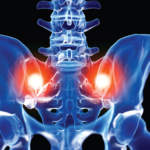The Case:
The office visit: A 56-year-old woman presents to the rheumatologist’s office for diffuse joint pain of moderate severity in her hand. There is prolonged morning stiffness, the patient is sore, and over-the-counter ibuprofen does not alleviate her symptoms. The patient indicates that the level of pain is about a six out of 10. She is married and a social drinker and smoker; her father had RA, and she recently had sinus surgery.
Review of symptoms: The patient has a history of gastroesophageal reflux disease and complains of joint pain and stiffness but denies dyspepsia or abdominal complaints. She denies fevers, headaches, chest pain, dyspnea, cough, oral ulcers, rashes, hematochezia, insomnia, and depression. The physician performs a comprehensive examination and reviews laboratory data collected from her primary physician. The physician determines that the patient has an elevated erythrocyte sedimentation rate and C-reactive protein. Her rheumatoid factor, cyclic citrullinated peptide antibody, and other labs are negative. The physician suspects seronegative RA and discusses potential treatment options. The patient is reluctant to take “strong” medication without a definitive diagnosis. An MRI of an involved joint of the hand is performed to aid in the medical decision-making process.
The patient is sent to the imaging room and gowned to have an MRI done. The imaging technician performs the procedure without contrast material and runs the report of the findings. The physician reads the report and sees that the patient has erosive disease of the joint in a distribution consistent with RA. The physician prescribes, and the patient agrees to take, a more aggressive form of treatment.
The coder receives the charge slip for the services and bills the charges as:
Diagnosis: 714.0
E/M visit: 99204-25
Procedure: 73221
Is this office visit and procedure coded correctly?

